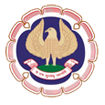|
Topic
|
Speaker
|
|
23rd, 24th, 25th, 30th & 31st May 2022 : 06.00 pm to 08.00 pm
|
|
Objectives:
Financial Modeling’ has attained the status of a ‘language’ in the domain of finance. It is a pre-requisite skill set for professionals to excel in the field of Investment Banking, Equity Research, Credit Rating Analysis, Financial Planning & Analysis, Project Finance and Alternative Investments amongst others.
Financial Statement Analysis, Modeling and Valuation have attained the status of pre-requisite skill sets for professionals to excel in the field of Investment Banking, Equity Research, Credit Rating Analysis, Financial Planning & Analysis, Project Finance and Alternative Investments amongst others.
The 5-day webinar series aims to equip the professionals to comprehend the technique pertaining to analysis of financial statements, the art behind making the financial models from scratch and science behind valuation to apply the same for better investment decisions.
|
| |
- Analysis of Statement of Profit & Loss:
- Comprehending the business model
- Understanding revenue drivers and correlating them with the industry
- Analysing the topline from the perspective of Y-o-Y growth, CAGR growth and Industry CAGR growth
- Analysing the cost structure
|
CA. Nitesh Bhuta |
| |
- Analysis of Balance Sheet
- Analysing the working capital cycle by establishing linkages between line items in statement of profit & loss and balance sheet
- Analysing capital expenditure and line items pertaining to plant, property and equipment
- Analysing the capital structure
|
|
| |
|
Analysis of Cash Flow Statement:
- Comprehending the various linkages between line items in statement of profit & loss, balance sheet and cash flow statement
|
|
| |
|
Overall Macro Analysis:
- Ratio Analysis (Profitability Ratios, Liquidity Ratios, Solvency Ratios and Investment Ratios)
|
|
| |
|
Case Studies:
- Analysis of historical financial statements incorporating the perspective of investors, lenders and the managment
- Identification of early warning signals pertaining to a debt trap
|
|
| |
- Identifying the material revenue drivers
- Incorporating inputs and assumptions pertaining to the revenue drivers
- Macro test check / analysis of market share
|
|
| |
- Identifying the material cost drivers
- Incorporating inputs and assumptions pertaining to the cost drivers
- Macro test check / historical & peer analysis
|
|
| |
- Working Capital Schedule:
- Comprehending the working capital cycle
- Incorporating inputs and assumptions pertaining to working capital cycle
- Macro test check / historical & peer analysis
|
|
| |
- Incorporating inputs and assumptions pertaining to the capital expenditure
- Incorporating inputs and assumptions pertaining to the depreciation and amortisation
|
|
| |
- Incorporating inputs and assumptions pertaining to long-term and short-term borrowings
- Incorporating inputs and assumptions pertaining to finance cost/interest
|
|
| |
| Building the Projected Statement of Profit & Loss |
|
| Building the Projected Balance Sheet |
|
| Building the Projected Cash Flow Statement |
|
|
Case Studies:
- Building a financial model for a service entity
- Building a financial model for a manufacturing entity
|
|
|
Valuation - Income Approach (Discounted Cash Flows)
- Computation of Cost of Equity & Cost of Capital
- Computation of Terminal Value
- Free Cash Flows to Firm (FCFF)
- Free Cash Flows to Equity (FCFE)
- Sensitivity Analysis
|
|
|
Valuation - Market Approach:
- Comparable Companies Methodology (CCM)
- Comprable Transactions Methodology (CTM)
|
|
|
Case Studies:
- Cost of Equity & Cost of Capital
- Income Approach - FCFF & FCFE
- Market Approach - CCM & CTM
|
|
 WIRC
Western India Regional Council
WIRC
Western India Regional Council
 WIRC
Western India Regional Council
WIRC
Western India Regional Council